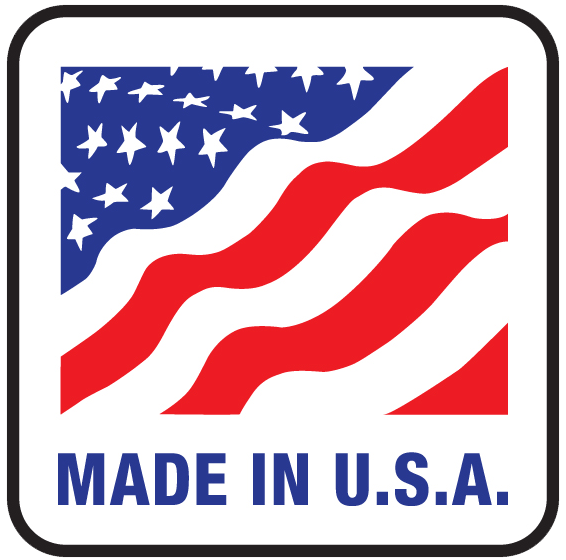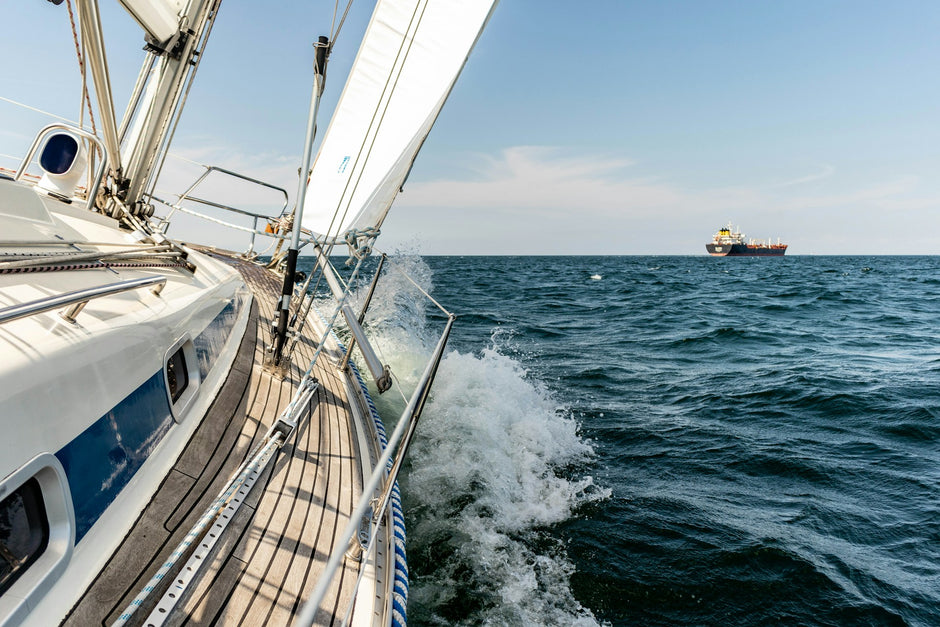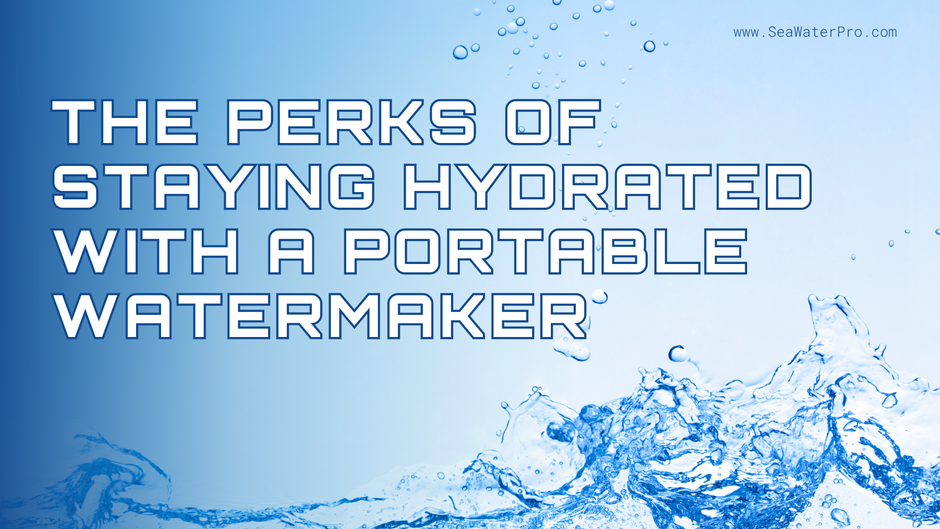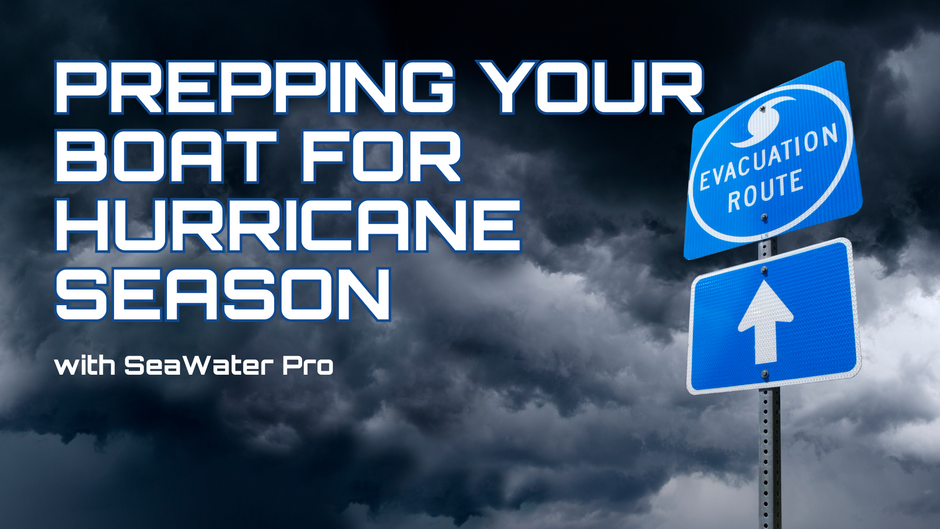Mammals, including humans, cannot drink seawater as salt in the concentrations found in ocean will lead to rapid and severe dehydration as well as cause kidney damage and can even result in death. This is because excess salt in the body causes water to be drawn out of the cells. However, saltwater can be made into potable freshwater through a process called "desalination."
On the consumer level, desalination is a term most familiar to those in the boating community. However, among the general population, the word desalination is not used commonly enough for most people to even know what it means, let alone have an understanding of how the procedure works. Even people familiar with the term don’t always have a thorough understanding of the process.
What is Desalination?
Simply put, desalination is the process of removing salt, or saline, from ocean water. A natural form of desalination is the evaporation of seawater. As water in the ocean evaporates the salt particles are left behind and the desalinized water is returned to Earth as rain. The man-made desalination process involves forcing saltwater through a semipermeable membrane.
Osmosis vs. Reverse Osmosis
Desalination uses a process known as reverse osmosis and removes roughly 97 percent of the salt particles from seawater. However, in order to best understand how reverse osmosis works an understanding of the naturally occurring process of osmosis is helpful. Briefly, osmosis is a phenomenon where molecules in a stronger solution migrate into a weaker solution to achieve a state of balance, called homeostasis. Two simple examples are the way plants absorb water through their roots and how kidneys absorb impurities from your blood. In both cases the area with the lower concentration of a substance, in these examples the roots and the kidneys, will acquire the substances from the areas of higher concentrations. In these examples this would be the groundwater and blood, respectively.
In desalination, reverse osmosis works through the use of a high pressure pump that increases the pressure on the side of a semipermeable membrane that has the high concentration of salt partials, thereby forcing the water across a membrane that has pores large enough to allow the H2O molecules though. However, while the pores are large enough to let, water through, the pores are small enough to prevent the salt molecules and other impurities from passing through the membrane. This essentially pulls the water away from the solids and allows only fresh water through.
The amount of pressure needed for successful reverse osmosis will depend on the concentration of salt in the water and the higher the salt concentration the more pressure will be required to overcome the naturally occurring osmotic pressure of the saltwater. The concentration of saline in saltwater is calculated by the ppm, or parts per million, of salt concentration. The standard accepted salinity guidelines are:
• Freshwater has less than 1,000 ppm.
• Slight salinity water contains 1,000 ppm to 3,000 ppm.
• Moderate salinity water contains 3,000 ppm to 10,000 ppm.
• High salinity water contains 10,000 ppm to 35,000 ppm.
Seawater has a very high salt concentration, containing roughly 35,000 ppm, rendering it undrinkable. Fortunately, advances in technology coupled with the scarcity of freshwater resources in many of the Earth’s arid regions has brought about large industrial desalination plants capable of purifying millions of gallons of water a day. However, small reverse osmosis desalinator systems are available for consumer use. These units, often referred to as “watermakers,” come in various sizes and volume capabilities from a few gallons per day to dozens of gallons per hour.
Types of Watermakers
The most common use of consumer-sized desalination systems are on boats that spend a lot of time out at sea, like a sailboat, where there is typically no source of fresh water readily available. Watermakers for boats, like the types supplied by SeaWater Pro, can be permanently installed, as is typically the case with large yachts, or portable watermakers roughly the size of a briefcase are available for smaller boats. These portable watermakers are handy and ideal for using on more than one boat or keeping in your automobile for emergencies where fresh water may not be readily available, such as in the aftermath of an earthquake or flood. Another valid concern for boaters is being able to find fresh water after a hurricane if the power goes out at the marina. In this situation having a 12v watermaker on your boat can literally be a lifesaver.
Summary
Water is the elixir of life and nothing on the planet can survive without it. However, the availability of fresh water is taken for granted by most people, until they no longer have it. If you own a boat and you spend more than a few hours at a time at sea, it is critical for you to have a reliable way of securing fresh water. SeaWater Pro offers a full line of permanently installed and portable watermakers for boats of all types and sizes. Contact them at 954-800-8800 to see how they can help you have a convenient, dependable and permanent way of producing clean and safe drinking water from the ocean.
On the consumer level, desalination is a term most familiar to those in the boating community. However, among the general population, the word desalination is not used commonly enough for most people to even know what it means, let alone have an understanding of how the procedure works. Even people familiar with the term don’t always have a thorough understanding of the process.
What is Desalination?
Simply put, desalination is the process of removing salt, or saline, from ocean water. A natural form of desalination is the evaporation of seawater. As water in the ocean evaporates the salt particles are left behind and the desalinized water is returned to Earth as rain. The man-made desalination process involves forcing saltwater through a semipermeable membrane.
Osmosis vs. Reverse Osmosis
Desalination uses a process known as reverse osmosis and removes roughly 97 percent of the salt particles from seawater. However, in order to best understand how reverse osmosis works an understanding of the naturally occurring process of osmosis is helpful. Briefly, osmosis is a phenomenon where molecules in a stronger solution migrate into a weaker solution to achieve a state of balance, called homeostasis. Two simple examples are the way plants absorb water through their roots and how kidneys absorb impurities from your blood. In both cases the area with the lower concentration of a substance, in these examples the roots and the kidneys, will acquire the substances from the areas of higher concentrations. In these examples this would be the groundwater and blood, respectively.
In desalination, reverse osmosis works through the use of a high pressure pump that increases the pressure on the side of a semipermeable membrane that has the high concentration of salt partials, thereby forcing the water across a membrane that has pores large enough to allow the H2O molecules though. However, while the pores are large enough to let, water through, the pores are small enough to prevent the salt molecules and other impurities from passing through the membrane. This essentially pulls the water away from the solids and allows only fresh water through.
The amount of pressure needed for successful reverse osmosis will depend on the concentration of salt in the water and the higher the salt concentration the more pressure will be required to overcome the naturally occurring osmotic pressure of the saltwater. The concentration of saline in saltwater is calculated by the ppm, or parts per million, of salt concentration. The standard accepted salinity guidelines are:
• Freshwater has less than 1,000 ppm.
• Slight salinity water contains 1,000 ppm to 3,000 ppm.
• Moderate salinity water contains 3,000 ppm to 10,000 ppm.
• High salinity water contains 10,000 ppm to 35,000 ppm.
Seawater has a very high salt concentration, containing roughly 35,000 ppm, rendering it undrinkable. Fortunately, advances in technology coupled with the scarcity of freshwater resources in many of the Earth’s arid regions has brought about large industrial desalination plants capable of purifying millions of gallons of water a day. However, small reverse osmosis desalinator systems are available for consumer use. These units, often referred to as “watermakers,” come in various sizes and volume capabilities from a few gallons per day to dozens of gallons per hour.
Types of Watermakers
The most common use of consumer-sized desalination systems are on boats that spend a lot of time out at sea, like a sailboat, where there is typically no source of fresh water readily available. Watermakers for boats, like the types supplied by SeaWater Pro, can be permanently installed, as is typically the case with large yachts, or portable watermakers roughly the size of a briefcase are available for smaller boats. These portable watermakers are handy and ideal for using on more than one boat or keeping in your automobile for emergencies where fresh water may not be readily available, such as in the aftermath of an earthquake or flood. Another valid concern for boaters is being able to find fresh water after a hurricane if the power goes out at the marina. In this situation having a 12v watermaker on your boat can literally be a lifesaver.
Summary
Water is the elixir of life and nothing on the planet can survive without it. However, the availability of fresh water is taken for granted by most people, until they no longer have it. If you own a boat and you spend more than a few hours at a time at sea, it is critical for you to have a reliable way of securing fresh water. SeaWater Pro offers a full line of permanently installed and portable watermakers for boats of all types and sizes. Contact them at 954-800-8800 to see how they can help you have a convenient, dependable and permanent way of producing clean and safe drinking water from the ocean.







